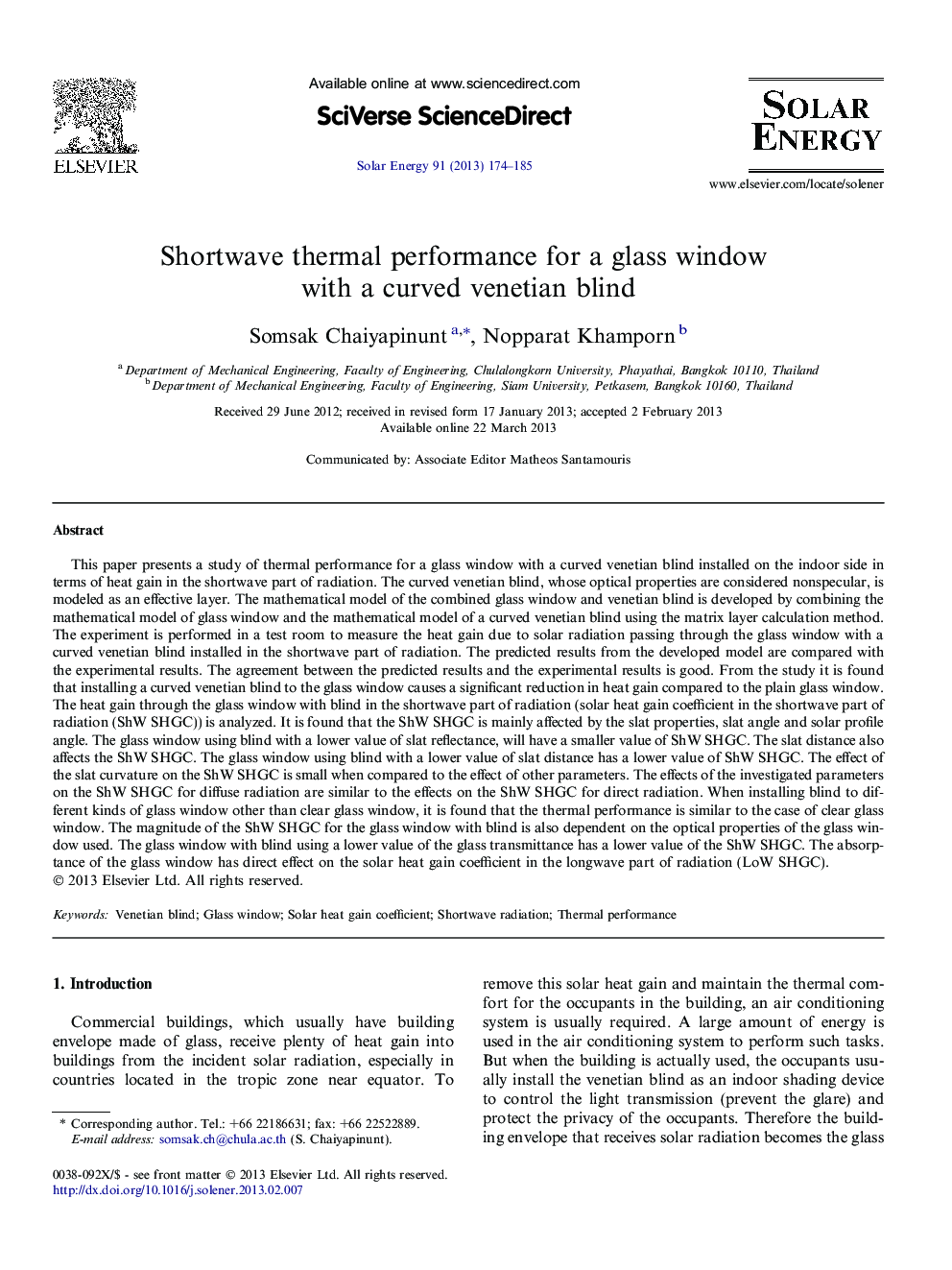| Article ID | Journal | Published Year | Pages | File Type |
|---|---|---|---|---|
| 1550406 | Solar Energy | 2013 | 12 Pages |
This paper presents a study of thermal performance for a glass window with a curved venetian blind installed on the indoor side in terms of heat gain in the shortwave part of radiation. The curved venetian blind, whose optical properties are considered nonspecular, is modeled as an effective layer. The mathematical model of the combined glass window and venetian blind is developed by combining the mathematical model of glass window and the mathematical model of a curved venetian blind using the matrix layer calculation method. The experiment is performed in a test room to measure the heat gain due to solar radiation passing through the glass window with a curved venetian blind installed in the shortwave part of radiation. The predicted results from the developed model are compared with the experimental results. The agreement between the predicted results and the experimental results is good. From the study it is found that installing a curved venetian blind to the glass window causes a significant reduction in heat gain compared to the plain glass window. The heat gain through the glass window with blind in the shortwave part of radiation (solar heat gain coefficient in the shortwave part of radiation (ShW SHGC)) is analyzed. It is found that the ShW SHGC is mainly affected by the slat properties, slat angle and solar profile angle. The glass window using blind with a lower value of slat reflectance, will have a smaller value of ShW SHGC. The slat distance also affects the ShW SHGC. The glass window using blind with a lower value of slat distance has a lower value of ShW SHGC. The effect of the slat curvature on the ShW SHGC is small when compared to the effect of other parameters. The effects of the investigated parameters on the ShW SHGC for diffuse radiation are similar to the effects on the ShW SHGC for direct radiation. When installing blind to different kinds of glass window other than clear glass window, it is found that the thermal performance is similar to the case of clear glass window. The magnitude of the ShW SHGC for the glass window with blind is also dependent on the optical properties of the glass window used. The glass window with blind using a lower value of the glass transmittance has a lower value of the ShW SHGC. The absorptance of the glass window has direct effect on the solar heat gain coefficient in the longwave part of radiation (LoW SHGC).
► Shortwave solar heat gain coefficient (ShW SHGC) is used for a performance index. ► ShW SHGC is dependent on the solar profile angle and slat angle. ► Decreasing slat reflectance and slat distance cause ShW SHGC decreasing. ► Decreasing the glass transmittance causes ShW SHGC decreasing. ► Using blind with proper slat properties causes a significant reduction in heat gain.
